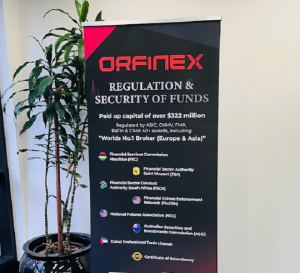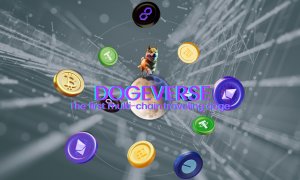Pro-exchange brigade misguidedly jumps on the ‘no toxic OTC execution’ bandwagon
Some exchange executives, in an attempt to bash the OTC industry, think if trading was conducted on exchange, no spoofing or layering by over-educated traders would be possible. This is quite simply not true

The exchange of words, if such a pun can be excused, is the least of the concerns that are being harbored by the OTC derivatives sector across major financial sectors at a point in time during which the listed derivative venues, themselves veritable giants that dwarf even the largest and longest established OTC firms, are displaying their admission of haplessness in being able to offer a credible alternative to retail customers which would encourage the retail FX sector’s client base back to their fold.
Thirty years have passed since the first OTC firms began to establish their presence in London and New York, a dynamic that would change the face of the retail electronic trading environment forever, lead to massive and forthright innovation in global financial markets, and quite simply leave the traditional exchange fraternity absolutely standing in its tracks, unable to offer such finely honed and instant access to the electronic markets globally, for such low cost and with low entry barriers.
Dissent in the wood-paneled boardrooms of the establishment, whether it be the London Stock Exchange, Deutsche Boerse, or the more urbane and perhaps more rounded and experienced derivatives marketplaces of Chicago, amassed and a perceived lobby began, with corporate force, against the OTC world via the regulators, manifesting itself in a proposal by Britain’s FCA to revise the way CFDs – a core business activity for many firms – are provided to a retail audience.
Some professionals with a litany of senior positions on their career history have spoken out, stating that this is a clear attempt to revamp all OTC business on exchange, and as the listed venues know they are unable to compete, are resorting to old-school-tie tactics.
Today, a different example of this has been displayed, this time by Tom O’Brien, Head of International Sales at Moscow Exchange.
Mr. O’Brien referred this morning to a report by Dow Jones subsidiary MarketWatch that was published last month regarding Samuel Lek, CEO of Lek Securities, and the charges administered to him and his company by North American financial regulator FINRA for allegedly assisting a customer engage in what’s called “layering,” which is a form of market manipulation involving high-frequency trading.
Lek Securities and Mr Lek himself were charged with aiding and abetting manipulative trading by one of its customers, as well as not having adequate risk-management controls, violating the know-your-customer rule and not following rules including the preservation of electronic communications. Charges were brought by Finra as well as units of the New York Stock Exchange, Nasdaq NDAQ, +0.11% and BATS.
Layering is the term for when a trader places multiple orders in multiple venues to create the appearance of interest, and then executes a trade on the opposite side of the market. The limit orders are then canceled. The idea is to get a better price for the trade.
The Dodd-Frank Act clearly stipulates that any form of spoofing or layering is illegal, and in some recent cases has been treated as a felony by US authorities.
So what is the issue here, and why the interest in it by an electronic derivatives exchange?
At the time of this having come to light, Mr. O’Brien made a comment about it, stating that “Realtime risk management by Exchanges and CCPs (central counterparties) can stop or at least curtail this type of activity as layering would cost money. That’s what we do at Moscow Exchange”.
Would it really?
This is quite a misleading attempt at marketing, and at knocking execution types that do not involve a central counterparty.
Indeed, there is no question that there are circumstances in which a central counterparty is a very good thing indeed, however the overall cost of clearing, paying exchange fees and the extra layer of processing and reporting that is required make it an impractical consideration for most retail traders.
However, in this case, Mr O’Brien’s opinion hints at something which cannot be substantiated.
Bearing in mind that Moscow Exchange, despite being a modern, very advanced venue, is unlikely to have superior risk management and order execution technology than CME Group or ICE in Chicago, it would be churlish to consider that spoofing or layering, or any type of ‘market abuse’ from high frequency traders who are quite simply ahead of the curve in terms of their own ability to outsmart the institutions, can be stopped simply by trading via Moscow’s centralized exchange.
It is realtime risk management. We look at the customer’s overall position every time they try to place a new order and see if they have enough collateral. Placing orders that increase the collateral required will always cost money and therefore becomes a factor in this activity.
Mr. O’Brien continued to comment, albeit yesterday, a month after the Lek Securities case was used as a marketing tool, stating “It is realtime risk management. We look at the customer’s overall position every time they try to place a new order and see if they have enough collateral. Placing orders that increase the collateral required will always cost money and therefore becomes a factor in this activity.”
In April last year, Navinder Singh Sarao stood accused by US prosecutors of triggering a £500 billion stock market crash by using computer programs to create fake transactions on an exchange operated by CME Group Inc in Chicago, making £28 million gains in the process, all from within this house, a hearing-aid-beige semi detached and very modest home in the equally anodyne West London suburb of Hounslow.
The charges that Mr. Singh Sarao appeared in court to address were layering and spoofing.
Use of these particular techniques on the afternoon of May 6, 2010 caused the Dow Jones Industrial Average to fall sharply by several hundred points in a matter of minutes, before recovering almost immediately. Mr. Singh Sarao is accused of making a $900,000 profit the day of the flash crash.
In total Sarao made around $40m (£28.3m) from trades by spoofing and layering over a five year period between 2009 and 2014. He was arrested at his parents home in Hounslow in April last year where he traded from his bedroom, promoting some to speculate on whether a one-man-band operating out of a bedroom could spark a crash of such magnitude.
Due to Mr. Singh Sarao’s close proximity to the Equinix LD4 data center which is only 14 km (approximately 9 miles) west of Hounslow in Slough, that particular data center being one of the most used data centers in global electronic trading, it could potentially be assumed that Mr. Singh Sarao had a latency advantage over Chicago-based CME Group due to the distance between Chicago and Slough compared to the distance between Hounslow and Slough. This has since been studied and debunked, therefore putting Mr. Singh Sarao in the full sights of the long arm of the law in the United States.
So, if Mr. Singh Sarao can pull that off against CME Group, from a bedroom within a bland suburban residential house, using his own computers, then there is no reason why a centralized counterparty of any type would prevent it.
CME Group offers seven risk management tools, designed to protect CME Globex customers and clearing firms, those being CME Globex Credit Controls, Risk Management Interface (RMI), FirmSoft, Kill Switch, Drop Copy, Self Match Prevention (SMP) and Cancel on Disconnect, all of which are highly recognized institutional level systems, yet Mr Singh Sarao was able to get around them.
Thus, the irony here being that a much less expensive system, provided by oneZero, PrimeXM or Gold-i to an OTC brokerage, which integrates a retail brokerage platform into OTC prime of prime liquidity and market connectivity is not only a more cost effective method, but far more solid when it comes to risk management, ensuring traders get the right prices directly from the market without exposing the brokerage to negative balances.
An example of this type of connectivity is Direct FX’s MetaTrader 4-based solution which combines multi-product execution ability and is able to process OTC and exchange listed trades on one platform, without the usual associated costs, and uses CQG’s solution for connectivity, and employs a customer liquidity integration solution from oneZero.
Ultimately, this is the type of system that will always be favored by retail traders and brokers, and any hyperbole from the world’s derivatives giants that infers that there is less likelihood of market abuse by high frequency traders if vast exchange fees and a central counterparty is invoked are quite simply not valid.









